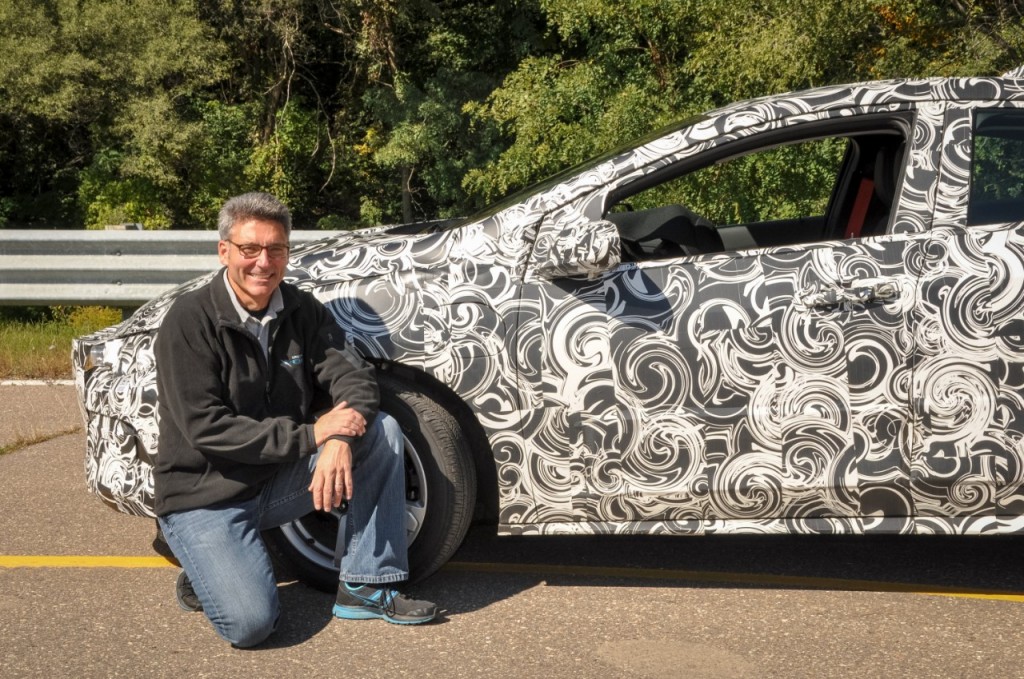If you follow a lot of car news, you’re probably familiar with the cycle that bloggers and journalists go through every time a new car is on its way to the street. There’s the initial announcement, followed by some teased sketches, then maybe a concept car or a prototype, and eventually the production model is photographed, reviewed, and distributed. Sprinkled throughout this process is the publication and scrutiny of spy shots, photographs nabbed by the paparazzi of the automotive world. Automakers know these people are out there, which is why they go to great lengths to camouflage their cars during testing.
Generally there are two kinds of camo in use by automakers, each corresponding to a different phase of development. In the initial stages of testing, you’re more likely to see cars wearing bulky foam masks and covered in black canvas. This kind of cover provides near total obfuscation, distorting the shape of the vehicle and hiding new features and equipment. It has drawbacks that prevent it from being used through the whole development process, though.
For one, as technology in cars grows more advanced, this kind of heavy duty camouflage becomes more of a burden and gets in the way of more than just pictures. Consider cars that are mounted with advanced radar and sensor arrays. These systems have to be tested without hindrance. For two, performance testing can’t be done wearing the full gear without returning inaccurate numbers. Full camo can impede cooling systems, suspension tuning, and aerodynamic evaluation.

Photo: GM via Gizmodo
The solution then is a second kind of camouflage called dazzle. You’ve probably seen spy shots of cars that look like they’re wearing a checkerboard or houndstooth wrap. You might even say “Well what’s the point of that? You can see the whole car?” Dazzle dates back to the First World War and was used on early battleships. The point is to use varied lines and shapes to break up the patterns that are generally recognized by your eyes. So while someone might spot a ship at sea, dazzle would make it harder for you to determine what kind of ship it was.
It works the same way with cars. The outlandish patterns that the engineers dream up can cast light on body work that would normally be shadowed, and it can darken the parts that are meant to shine. This tricks your eyes into seeing a different car, or at the minimum it will conceal many of the true character lines on a new model.
Dazzle has the added bonus of wreaking havoc on modern cameras. Autofocus has a difficult time figuring out what to sharpen or smooth because of the uneven colors and lines. This doesn’t stop the seasoned spies, but it helps prevent just anyone from snapping a picture with their camera phone.
We’ve explained a lot of the how, but the title asks “Why do carmakers camouflage their cars?” All the padding and dazzle in the world doesn’t stop most journalists from figuring what a car is and sharing it. That’s true, but brands still love to keep their secrets as close to the chest as possible, and they will do whatever they can do to preserve the reaction from a reveal.
If you’re interested in learning more about car camouflage, we recommend this article on Gizmodo, and this one on Autoblog.
Folks in Raleigh, Leith Nissan is the best place to find a new Nissan vehicle in the Triangle.

Comments are closed.